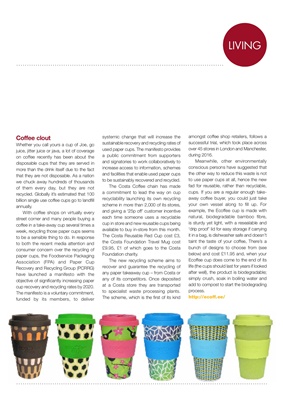
KITLIVING
'not trying hard enough', so perhaps we
should look more closely at the way that
healthcare is delivered and try different
ways to support people. What many
people with diabetes perceive is that they
are failing. This causes damage along the
way, especially emotional damage. Living
with diabetes is not just about achieving
HbA1c levels but also about coping with
a multitude of other aspects of diabetes.
Quality-of-life matters as well."
Technology adoption
Barnard's aim is to change how people
cope with the condition. To that end, she
and her team have developed KALMOD
to improve the healthcare experience,
especially to improve what can be
achieved in consultations, for both the
person with diabetes and their HCPs.
"Currently, the HCP chooses for their
patient which therapy, often diabetes
technology, will give them the greatest
benefit from a medical point of view," says
Barnard, "But they do this often without
the context of the wider lifestyle factors
that impact on an individual's ability to use
that treatment or technology to best effect.
It's a matter of getting the right device at
the right time and to reduce the burden
associated with living with diabetes. The
goal of any therapy is to provide optimal
medical benefits and improved quality of
life. While cost is often used as a barrier to
access to new technologies, in reality the
biggest cost is the device that is not used
or not used well. My team and I are hoping
to move these technology and treatment
decisions away from being solely medical
so that the assessment is more holistic."
The purpose of the KALMOD tool is
to map the right therapy or technology to
the right person, based on that person's
specific current situation. Barnard
explains, "We believe if you can better
understand the patient's needs then you
can help them access the therapy that
best meets their needs in the context of
their own life. Some technologies simply
don't work for some people for all sorts of
reasons, often lifestyle related as well as
medical. And sometimes other things are
more important at this time."
KALMOD is currently in the research
phase and early results are very positive.
Aimed at Type 1 diabetics, a version for
Type 2 diabetes is also underway. "The
idea is that people will be doing this
quickly on a tablet in the waiting room
prior to their consultation," says Barnard,
"then the HCPs can talk through the
results and recommendations with the
people when they go in to see them.
They are the priorities that will result
through the use of a decision-tree within
the questionnaire. Once the clinical trials
are complete, KALMOD will be accessible
outside of clinics."
www.bhrltd.com
*The Kaleidoscope model of care presents a
novel, holistic, tailored and individualized approach
to healthcare delivery for people with diabetes
through an assessment of an individual's current
regimen, barriers and motivation and available
support resources. The model promotes the
specific needs of individuals with diabetes. These
needs are dynamic, taking a different shape at
different points in time, recognizing and adapting
to the range of care needed. It is a flexible model
that can be applied in different healthcare settings.
CALL TO ACTION!
Would you like to test the system?
Professor Barnard is looking for volunteers to try the KALMOD tool via a secure
website (currently not live, but available for research purposes only). "We ask you
to complete a brief survey telling us about your experience of using the tool and
your thoughts about it. We'd very much like your help!"
To use the KALMOD tool in its pilot stage CLICK HERE.